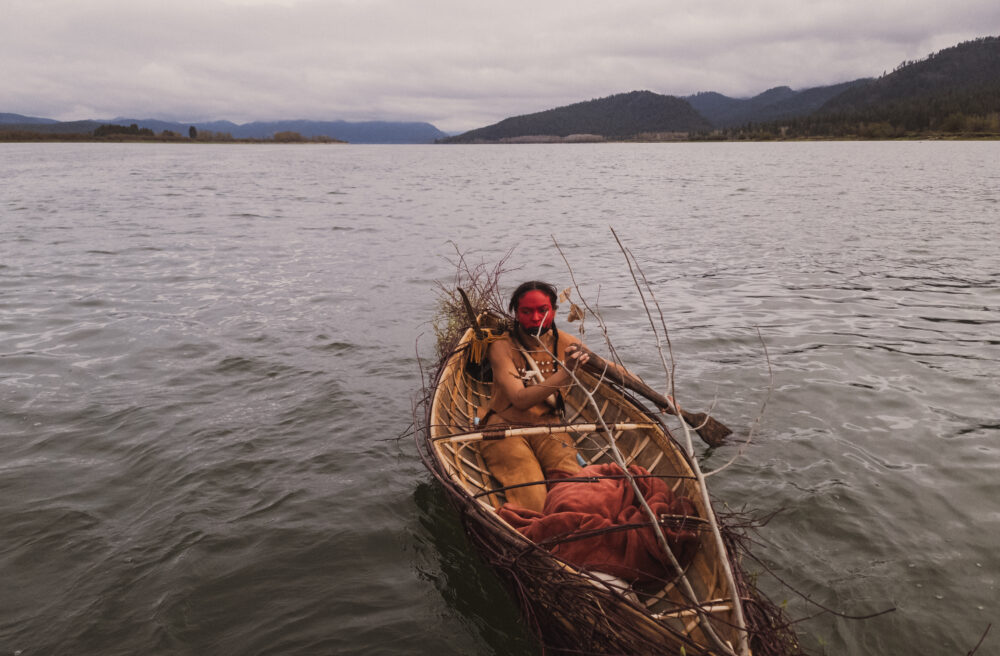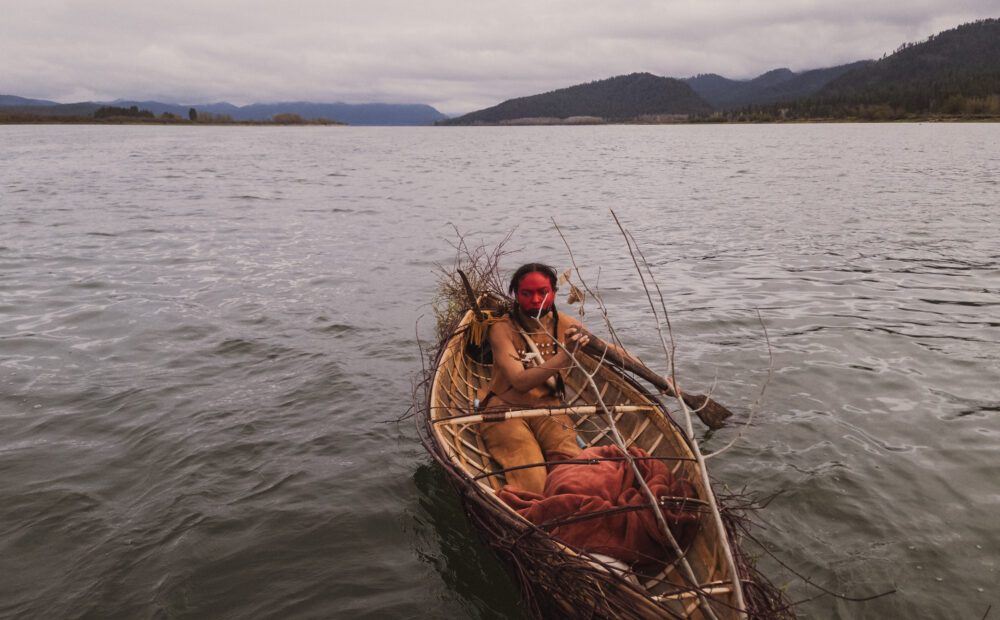
Supernatural thriller featuring Salish language filmed in Pacific Northwest
Listen
Projects featuring indigenous culture are taking off from big studios to small towns, often as a way to share and preserve culture. Correspondent Lauren Paterson reports on how a member of the Spokane Tribe is producing a pre-colonial supernatural thriller about his people – entirely in the Salish language.
(Runtime 3:17)
Read
Filmmaker Ryan Abrahamson isn’t just from Spokane, Washington. He’s a member of the Spokane Tribe, who have lived in the region for more than 15,000 years.
Abrahamson has always been interested in creating films about history and culture.
“I’m like, you know, it’d be hilarious if we did a movie about a Spokane Indian speaking Spokane Salish based in pre-colonial Spokane,” he said.
Abrahamson wrote a script, and applied for a Spokane Arts Grant with his business partner Mike Kane. They got the grant, and the movie was filmed on the Spokane Reservation this spring.
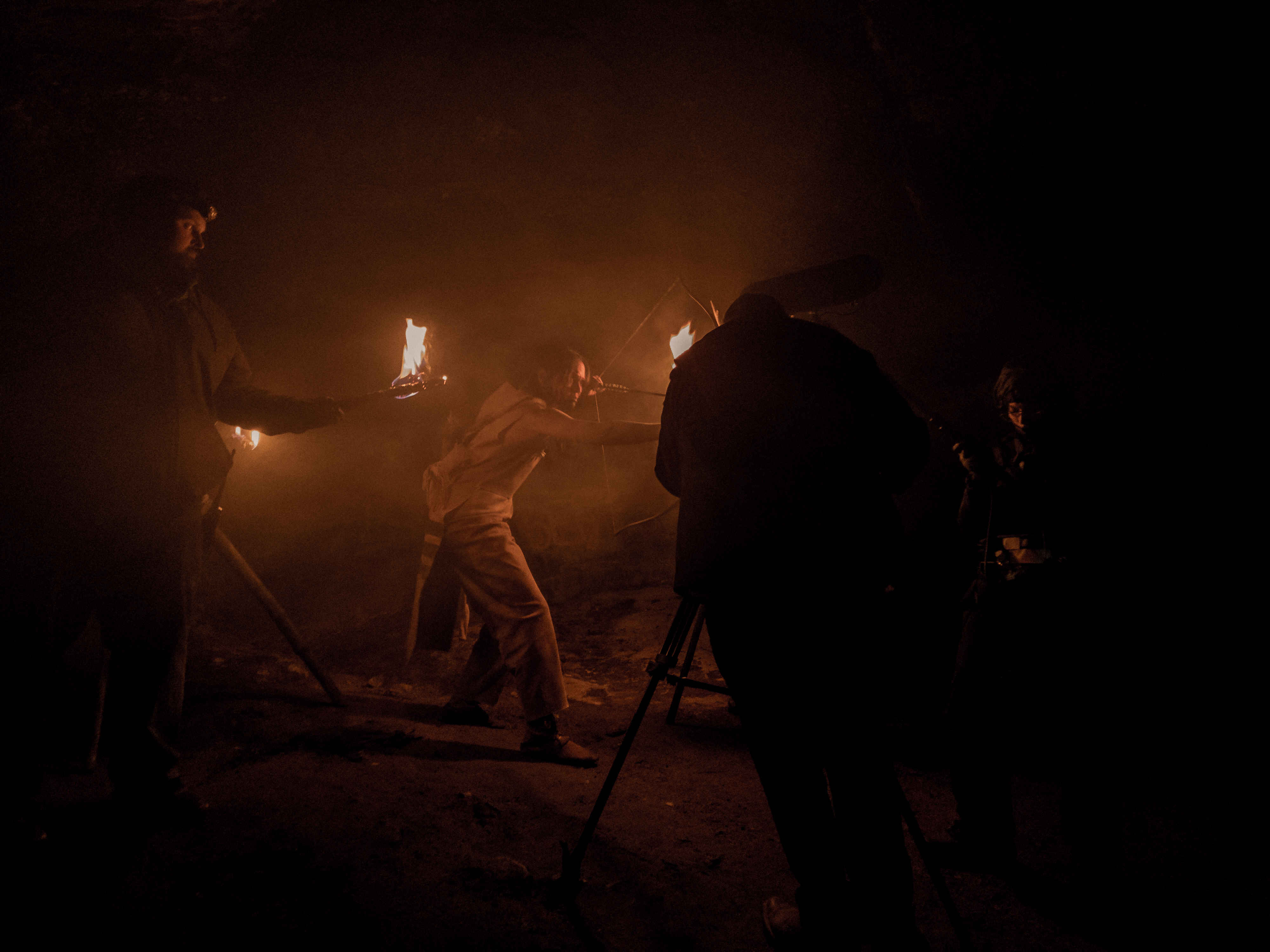
Qemtsna faces her enemy at the end of the world. Abrahamson filmed the scene around three in the morning. Abrahamson is on camera while producer Mike Kane holds a torch inside the Manresa Grotto Cave. (Photo courtesy Rajah Bose)
The fertile hunting grounds and rivers full of salmon made Spokane a busy indigenous trade hub for thousands of years. Salish was a spoken shorthand for many of the Northwest tribes.
By the late 1800s, the Northern Pacific Railway was bringing hundreds of European settlers to the area.
But this story is set 100 years before the first settler stepped foot in Spokane. The film centers on a newlywed couple who stumble across a glowing spirit rock. It’s filled with dark magic, and brings them down a dangerous path.
In this exchange, main characters Xwstu and Qemstna talk while playing in the Spokane River.
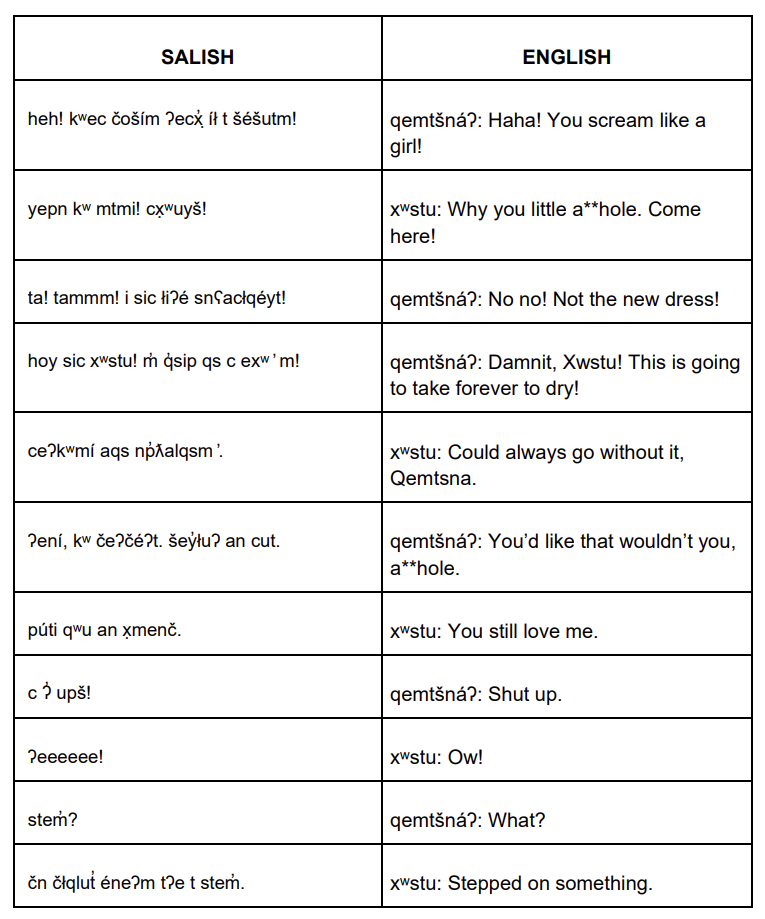
Filmmaker Ryan Abrahamson wrote the script in English, and Barry Moses of the Salish Language House translated the story into Salish.
Language consultants were hired to help the actors learn Salish. Felicia Pichette one of them.
“And so it was kind of a really crash course, there was only like a week, but they did really awesome that where we could just focus on speaking and hitting all those character sounds that we have in our language,” she said.
Pichette says there’s been a wave of interest in the Salish language, and it continues to grow.
“So, to see that in the movies, you know, it’s a big step and hopefully we’ll see interest with the younger generation because they’re more into technology and the new movies, the new phones, you know, how do we connect to get them to want to learn the language and who they are,” said Pichette.
Abrahamson filmed the movie on the Spokane Reservation where he grew up. He says tribal elders often came to the set, just to hear Salish being spoken.
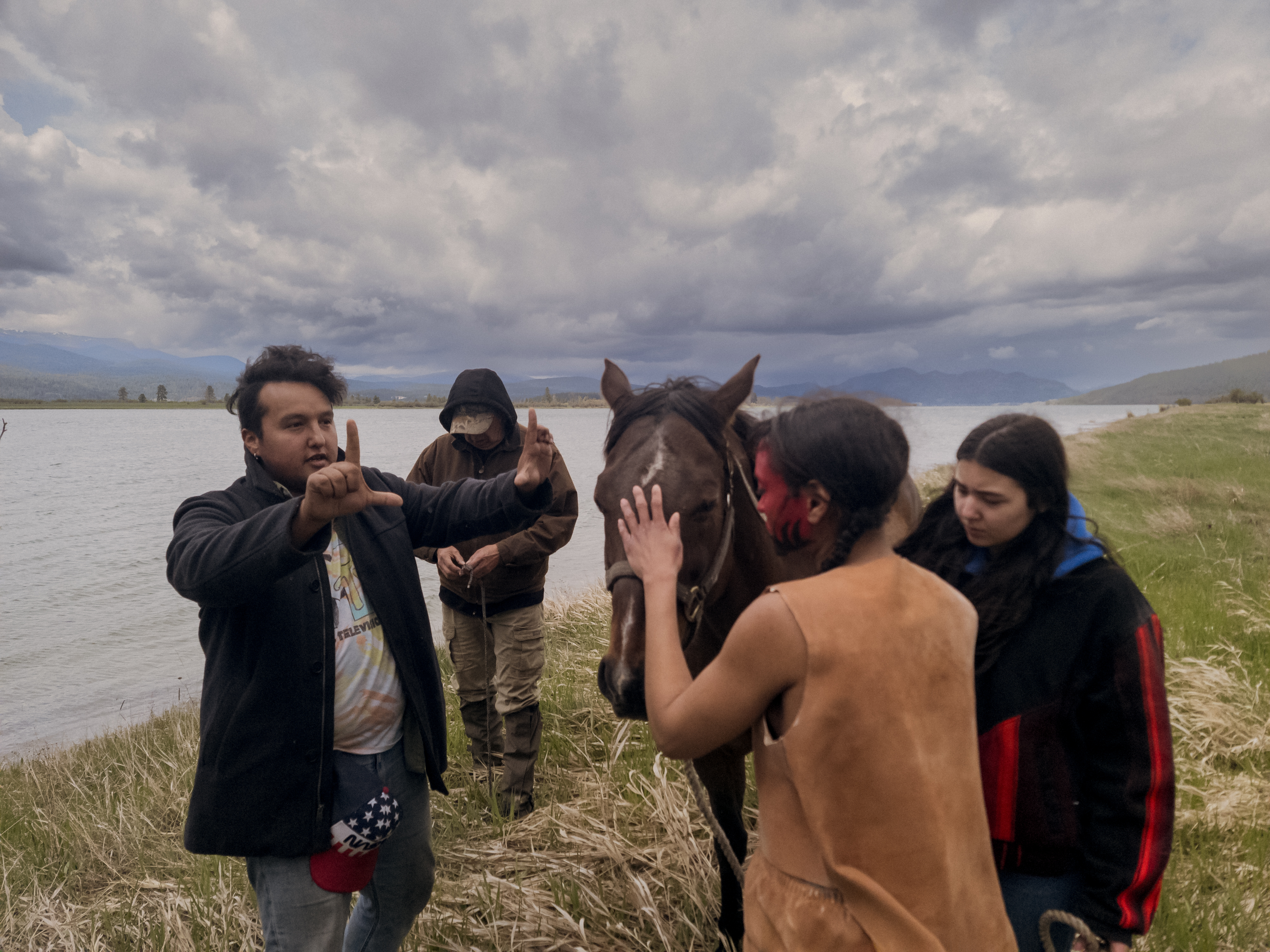
Abrahamson explains to lead actress Tanajsia Slaughter how she’ll be in frame the entire time as she rides, stops, dismounts and leads the horse to water. Abrahamson said it was a windy and rainy day, which coincided well for the scene. (Photo courtesy Rajah Bose)
He says he’s experienced a lot of support from his tribe, Salish language teachers, and members of the local community.
“And it was from there where I realized like, there’s a real market for – authentic Indian storytelling.”
Involving the tribal language was just one part of the project. Abrahamson said he wanted to display the beauty of the Inland Northwest.
“The landscape itself is just mostly untouched. And I felt like it was just a premium opportunity to showcase the beauty of untouched land,” he said.
Much of the mysticism in the movie is pulled from tribal stories Abrahamson heard as a child. Stories of the old world, before European colonization. When the Salish hunted six foot salmon who swam in from the coast.
“And mysticism comes from an unseen force or a force out of your control that’s affecting change around you. The powerful change that could kill you, could save you, teach you new things.”
Abrahamson intends to debut the 10 minute short at the Spokane International Film Festival next February. He’s hoping to garner enough attention and funding to eventually make a feature film.

